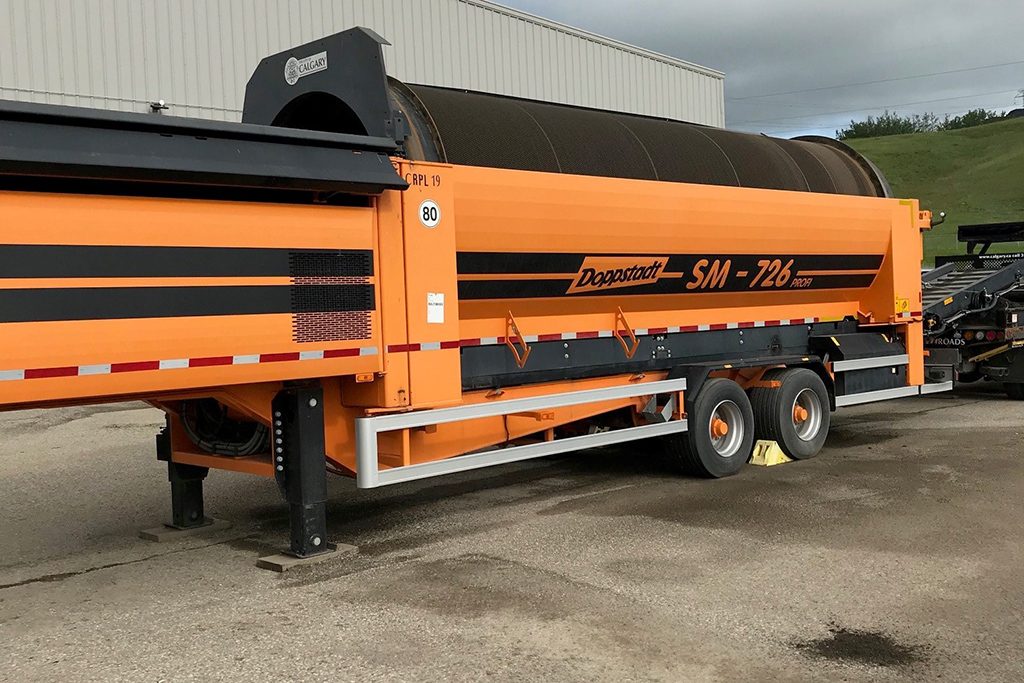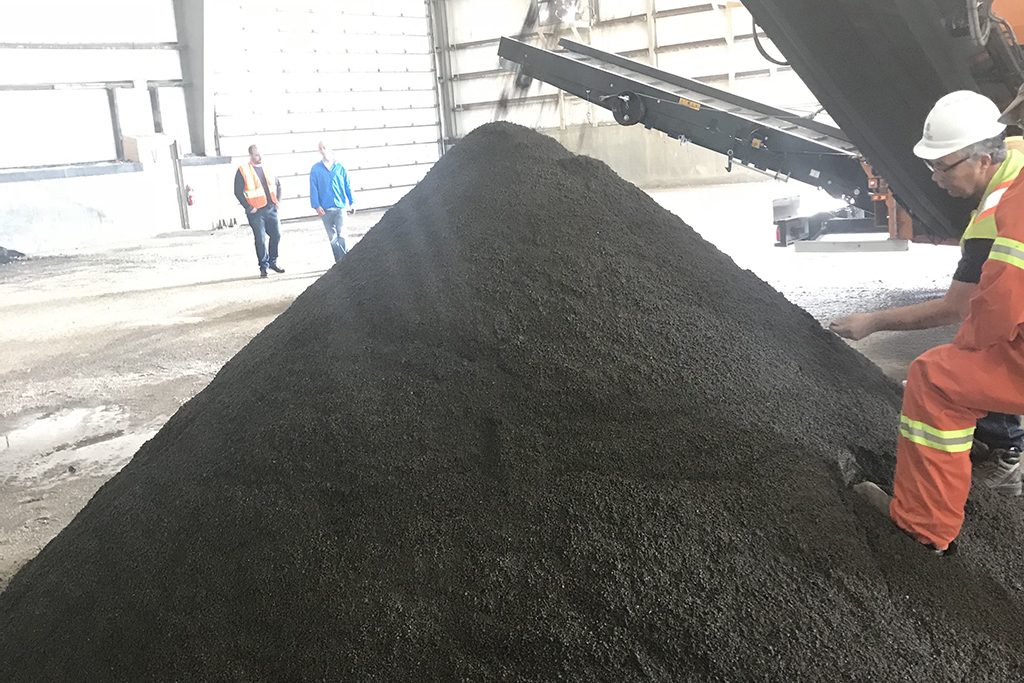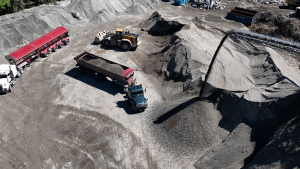A pioneering pilot project has been launched in Calgary that enables city workers to recover and reuse gravel from waste material that is swept up and off roads and thoroughfares after the winter.
At the heart of the venture is a large trommel, a machine normally used in the mineral and solid-waste processing industries, that has been modified so it can separate gravel and dirt from the waste.
As a result, tons of gravel along with organic material can be repurposed instead of being sent to landfills.
“When you think about it, it’s a huge step,” says Bryan Savage, NW district manager for roads maintenance at the City of Calgary. “What we would transport into the landfill would scare you. It was a lot.”
The city maintains approximately 1,200 kilometres of gravel and paved back lanes along with more than 16,000 lane kilometres of paved roads and, each spring, conducts a clean-up and sweep to remove sanding materials and debris that has accumulated on the thoroughfares during the winter.
Much of the material, consisting of gravel, dirt, trash and other items like running shoes, socks and car parts like hubcaps, would end up in catch basins and, in the past, would be shipped off to landfills.
However, Savage and his team got thinking about the problem came up with a novel way to recycle much of the material and thereby avoid the costly exercise of transporting it to the landfill.
They took a large trommel, a Doppstadt SM-726 to be specific, and modified it to separate the gravel and organic material. The machine consists of a long cylindrical drum with a custom-made screen.
The machine has a rotating drum and is powered by a Mercedes Benz diesel motor. Material is fed into the drum and, as it spirals down the drum, the smaller stones pass through the screen, leaving the bigger pieces to be reused.
Two brooms sweep the material as it passes through the cylinder to brush off any debris and, at the end of the process, there are two piles – one of gravel and the other of organic material.
The screen in the trommel cost $50,000 and was made at a company in Chilliwack specifically for Calgary.
The recycled gravel is mixed with 75 per cent new, unused material for use again on roads while the organic material can be mixed with virgin material and used for composting.
In 2018, nearly 368 tonnes of material were put through the custom-made trommel machine, resulting in nearly 269 tonnes coming out as good, reusable material.
“So, we’re getting a 75 to 25 ratio, which is good,” says Savage.
The trommel itself is noisy when operating. It is on wheels and is usually located in a city storage facility.
On a good day, Savage says 100 tonnes of material can be put through the machine, resulting in 75 tonnes of reusable material.
The machine is a boon for the city. It’s not only a more environmentally-friendly way of doing business but it saves money. One tandem truck would burn 250 to 300 litres of fuel a day to transport the waste material to a landfill.
Savage says the city had a trommel they’d used for years to separate loam from debris but never thought about using it to reuse the gravel.
“We were just basically spit-balling and we figured with the cost of the tipping fees, the price of fuel, the tires, and whatnot, it was costing us to dump it in a truck and haul it out to the landfill. The landfills aren’t that close, they’re distributed around the city. So, we needed to do something about it.
“At the landfill, we were paying about $1 million or so in tipping fees every year, and that doesn’t count your wage and your fuel and your rubber.”
A concern was that the fracture or shape of the collected gravel would no longer help it stay on the road surface because it had been on the ground for some time and might be rounded.
“We thought, ‘Why don’t we check it?’ So, we did, and it came back that the fracture was still within the parameters and was still good enough that it could go back out. With that result in our pocket, we went ahead.”
As the process continued, the team continued to check the material and each time found it was reusable.
“A lot of people just assume that the rock has no fractured edges and it’s too dirty,” says Savage. “That’s what I thought. I was pleasantly surprised when we kept getting these positive results back from the labs.”
City crews collect the material from heavy-use roads in the city as well as Sixteenth Avenue which is part of the Trans-Canada Highway and runs through Calgary.
More than 1,500 tonnes of material has been collected and set aside for recycling this year. Crews are busy sifting through the material and anticipate working into August to make their way through the pile.
As far as Savage knows, the trommel is the first of its kind used by a municipality, and none in North America currently recycle their waste.
“It’s damn unique.”












Recent Comments
comments for this post are closed